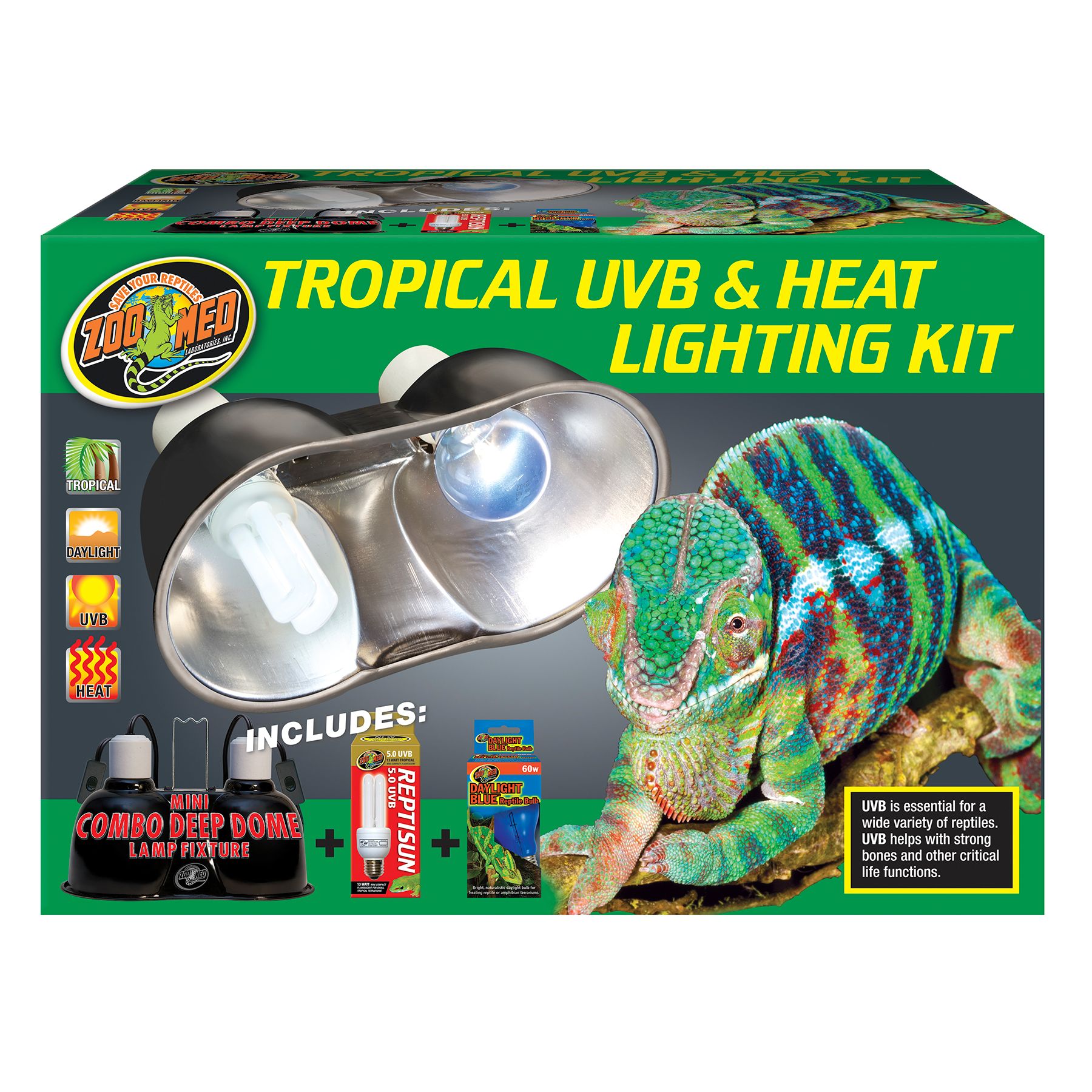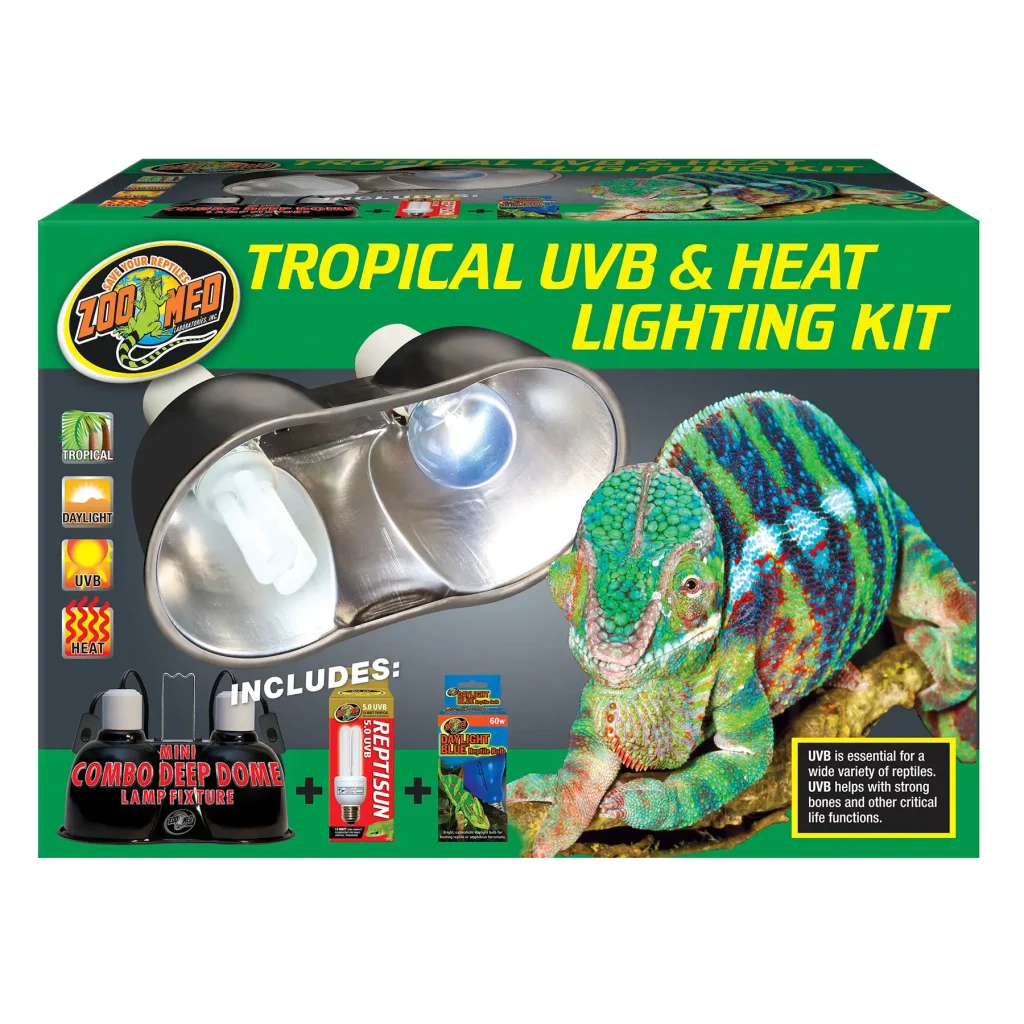Chameleons are fascinating creatures that are known for their ability to change colors. But have you ever wondered what kind of lighting they need to thrive in captivity? Providing the right lighting for your chameleon is essential to ensure their health and well-being.
In this article, we will explore the different types of lighting that chameleons need, why they are important, and how to set up the perfect lighting environment for your pet. Whether you are a new chameleon owner or an experienced reptile enthusiast, this information will help you create a comfortable and stimulating habitat for your chameleon to live in.

Understanding the Lighting Needs of Chameleons
As a chameleon owner, it is important to know that providing the right kind of lighting is crucial to their health and well-being. Chameleons require specific types of light to thrive and stay healthy. In this article, we will discuss the types of lighting that chameleons need and why they are important.
UVB Lighting
UVB lighting is essential for chameleons as it helps them metabolize calcium and vitamin D3, which are important for bone health. Without proper UVB lighting, chameleons can develop metabolic bone disease, which can be fatal. The recommended UVB lighting for chameleons is between 5-12% UVB, depending on the species.
UVB lighting should be provided for 10-12 hours a day and should be replaced every 6-12 months, even if it appears to be working. It is important to note that UVB does not penetrate through glass or plastic, so the lighting must be placed on top of the mesh screen of the chameleon’s enclosure.
Basking Lighting
Basking lighting is important for chameleons as it provides the heat they need to regulate their body temperature. Basking lighting should be provided for 10-12 hours a day and should be placed at one end of the enclosure to create a temperature gradient. The basking spot should be between 85-95°F, depending on the species of chameleon.
It is important to note that basking lighting should not be used as the only source of heat, as it can cause burns if the chameleon gets too close. A ceramic heat emitter or other heat source should also be provided to maintain the temperature gradient in the enclosure.
LED Lighting
LED lighting is a popular choice for chameleon owners as it provides a low heat source while still providing the necessary light for the chameleon. LED lighting can also be used to create a day/night cycle for the chameleon, which is important for their overall health.
LED lighting should be provided for 10-12 hours a day and should be placed at the opposite end of the enclosure from the basking light to create a gradient. It is important to note that LED lighting does not provide UVB, so it should not be used as the sole source of lighting for the chameleon.
Benefits of Proper Lighting
Providing the proper lighting for your chameleon has many benefits, including:
– Improved bone health
– Better immune system function
– Increased activity levels
– Improved overall health and well-being
Lighting vs. Heat Lamps
While heat lamps can provide the necessary heat for your chameleon, they do not provide the necessary UVB lighting. It is important to use a separate UVB light source to ensure your chameleon’s health and well-being.
Choosing the Right Lighting
When choosing lighting for your chameleon, it is important to research the specific lighting needs of their species. Some chameleons require higher levels of UVB lighting than others, and some species require a different temperature gradient.
It is also important to choose high-quality lighting sources that are specifically designed for reptiles. Cheap or low-quality lighting can be harmful to your chameleon and can lead to health problems.
Conclusion
Providing the proper lighting for your chameleon is essential for their health and well-being. UVB lighting, basking lighting, and LED lighting are all important for different reasons, and should be used in combination to create a healthy environment for your chameleon. By understanding their specific lighting needs, you can ensure that your chameleon is happy and healthy for years to come.
Frequently Asked Questions
Chameleons are fascinating creatures that require specific care to thrive. One of the most important aspects of their care is providing them with adequate lighting. In this section, we will answer some common questions about the lights chameleons need.
What type of lighting do chameleons need?
Chameleons require two types of lighting: UVB lighting and basking lighting. UVB lighting is essential for chameleons because it helps them produce vitamin D3, which is necessary for calcium absorption and overall health. Basking lighting provides heat and allows chameleons to regulate their body temperature. Both types of lighting should be on for 10-12 hours a day.
It’s important to note that not all UVB bulbs are created equal. You’ll want to choose a bulb that emits UVB in the 290-320 nm range and replace it every 6-12 months, depending on the manufacturer’s recommendations. Basking bulbs should be positioned so that the temperature at the basking spot is between 85-95°F.
Can I use a regular household bulb for basking?
No, you should not use a regular household bulb for basking. These bulbs emit visible light but do not provide the necessary heat for chameleons to regulate their body temperature. Instead, you should use a basking bulb specifically designed for reptiles. These bulbs emit both visible light and heat and are available in a variety of wattages to suit your chameleon’s needs.
When selecting a basking bulb, it’s important to choose one that is appropriate for your chameleon’s species and enclosure size. You’ll also want to position the bulb so that it creates a basking spot that is large enough for your chameleon to comfortably sit on and regulate its body temperature.
Can chameleons be exposed to natural sunlight?
Yes, chameleons can be exposed to natural sunlight, and it’s actually beneficial for their health. However, it’s important to monitor the temperature and UVB levels to ensure they are within the appropriate range. Too much heat or UVB exposure can be harmful to chameleons, so it’s important to provide shade and a place for them to cool off if needed.
If you choose to expose your chameleon to natural sunlight, it’s also important to take precautions to prevent escape. Chameleons are excellent climbers and can easily escape from outdoor enclosures. Additionally, they can be susceptible to predation from birds and other animals, so it’s important to supervise them while they are outside.
How can I tell if my chameleon is getting enough UVB?
One way to tell if your chameleon is getting enough UVB is to observe their behavior. Chameleons that are getting enough UVB will be active and alert and will have a healthy appetite. On the other hand, chameleons that are not getting enough UVB may be lethargic, have a decreased appetite, and may develop health problems such as metabolic bone disease.
You can also use a UVB meter to measure the UVB levels in your chameleon’s enclosure. This can help you ensure that the UVB levels are within the appropriate range and that your chameleon is getting the necessary UVB exposure for optimal health.
How often should I replace my chameleon’s lighting?
You should replace your chameleon’s UVB bulb every 6-12 months, depending on the manufacturer’s recommendations. Over time, the output of UVB bulbs decreases, even if they still emit visible light. This means that your chameleon may not be getting the necessary UVB exposure, which can lead to health problems.
Basking bulbs should also be replaced periodically, especially if they start to emit a different color of light or if the temperature at the basking spot starts to decrease. It’s important to monitor the temperature and light output regularly to ensure that your chameleon is getting the necessary lighting for optimal health.
What lights does a chameleon need
In conclusion, chameleons require specific lighting conditions to thrive in captivity. UVB lighting is essential to maintain their overall health and wellbeing. Without proper lighting, chameleons can suffer from a range of health issues, including metabolic bone disease.
It’s important to note that not all lighting options are created equal. Incandescent bulbs and household lighting are not sufficient for chameleons. Instead, they require specialized UVB bulbs that emit the appropriate wavelengths of light.
If you’re considering keeping a chameleon as a pet, it’s crucial to research their lighting needs and invest in the proper equipment. With the right lighting, you can create a healthy and happy environment for your chameleon to thrive in.

